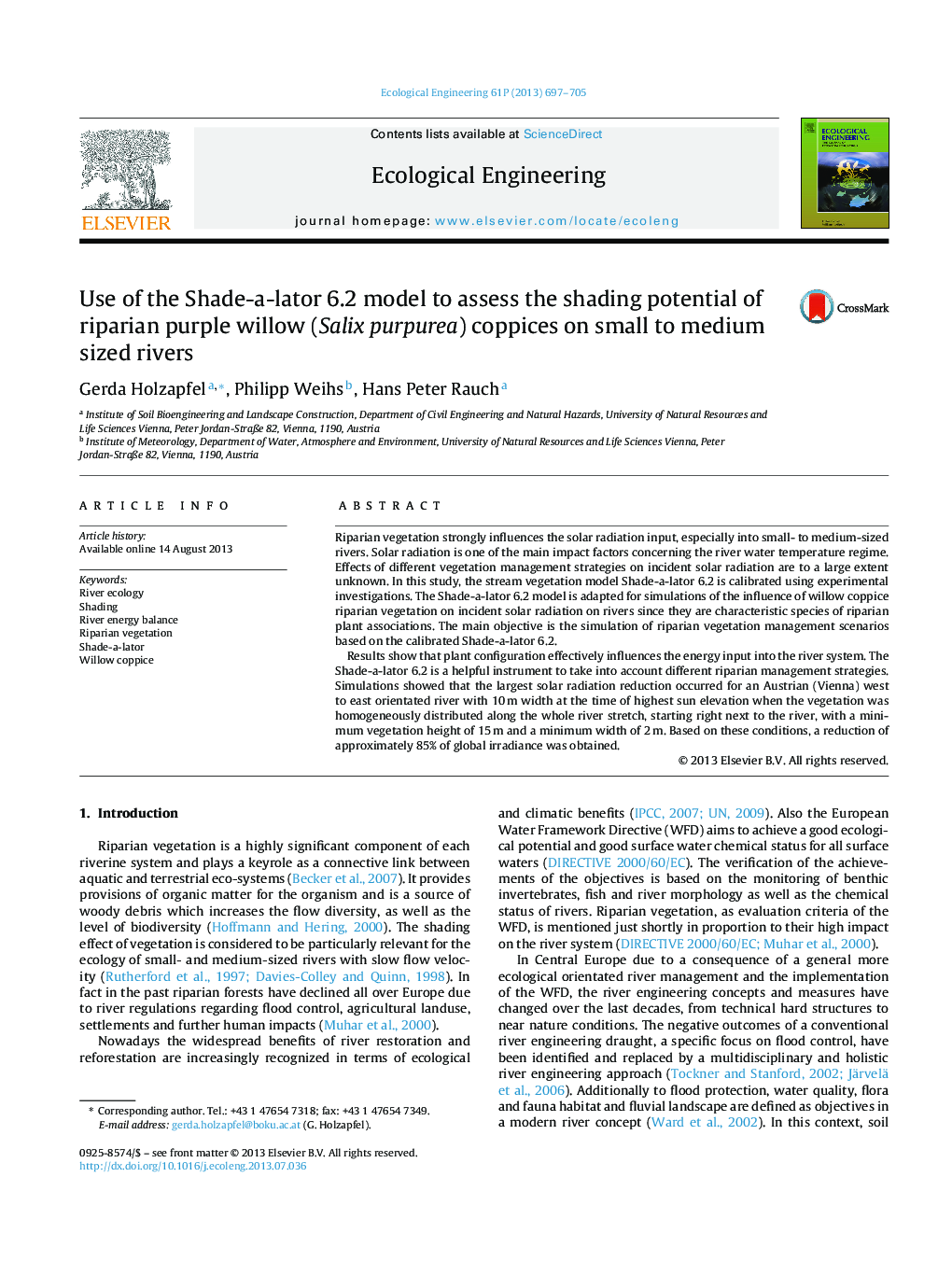| کد مقاله | کد نشریه | سال انتشار | مقاله انگلیسی | نسخه تمام متن |
|---|---|---|---|---|
| 4389638 | 1305136 | 2013 | 9 صفحه PDF | دانلود رایگان |

Riparian vegetation strongly influences the solar radiation input, especially into small- to medium-sized rivers. Solar radiation is one of the main impact factors concerning the river water temperature regime. Effects of different vegetation management strategies on incident solar radiation are to a large extent unknown. In this study, the stream vegetation model Shade-a-lator 6.2 is calibrated using experimental investigations. The Shade-a-lator 6.2 model is adapted for simulations of the influence of willow coppice riparian vegetation on incident solar radiation on rivers since they are characteristic species of riparian plant associations. The main objective is the simulation of riparian vegetation management scenarios based on the calibrated Shade-a-lator 6.2.Results show that plant configuration effectively influences the energy input into the river system. The Shade-a-lator 6.2 is a helpful instrument to take into account different riparian management strategies. Simulations showed that the largest solar radiation reduction occurred for an Austrian (Vienna) west to east orientated river with 10 m width at the time of highest sun elevation when the vegetation was homogeneously distributed along the whole river stretch, starting right next to the river, with a minimum vegetation height of 15 m and a minimum width of 2 m. Based on these conditions, a reduction of approximately 85% of global irradiance was obtained.
Journal: Ecological Engineering - Volume 61, Part C, December 2013, Pages 697–705